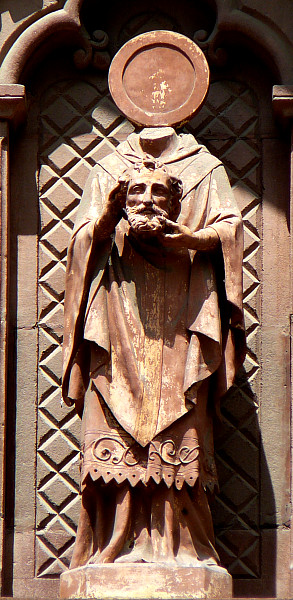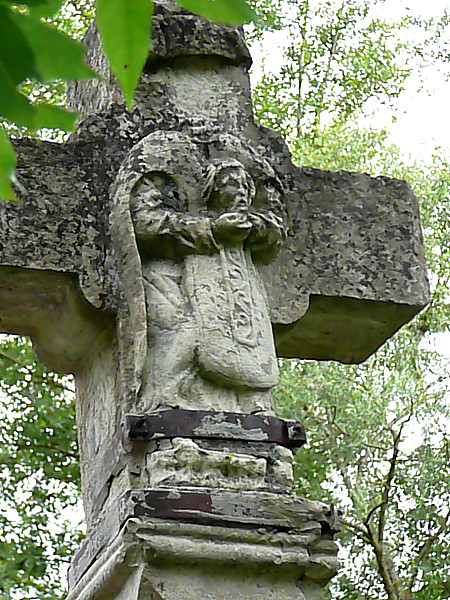The "impious" of the martyrology are identified as Saracens by local legend. Other texts, which I have not seen, are said to recount the saint's escape from the Saracens by crossing the river Lot using his cloak as a boat. A stained-glass window in the church in Espalion pictures this event. An identical miracle is also credited to St. Raymond of Peñafort.
In portraits, St. Hilarian carries his head in his hands, as at right. As a priest, he is usually portrayed in Mass vestments: a chasuble with a Y-shaped cross over an alb and cassock, again as at right.
Prepared in 2014 by Richard Stracke, Emeritus Professor of English, Augusta University

St. Hilarian (See the description page.)

St. Hilarian on the Back of a Roadside Cross (See the description page.)
ATTRIBUTES
- Head held in hands
- Chasuble over an alb and cassock
NAMES
- Sometimes called St. Hilarian of Perse
BIOGRAPHY
- Acta Sanctorum, June vol. 2, 1068-69
NOTES
1 Acta Sanctorum 1068-69.